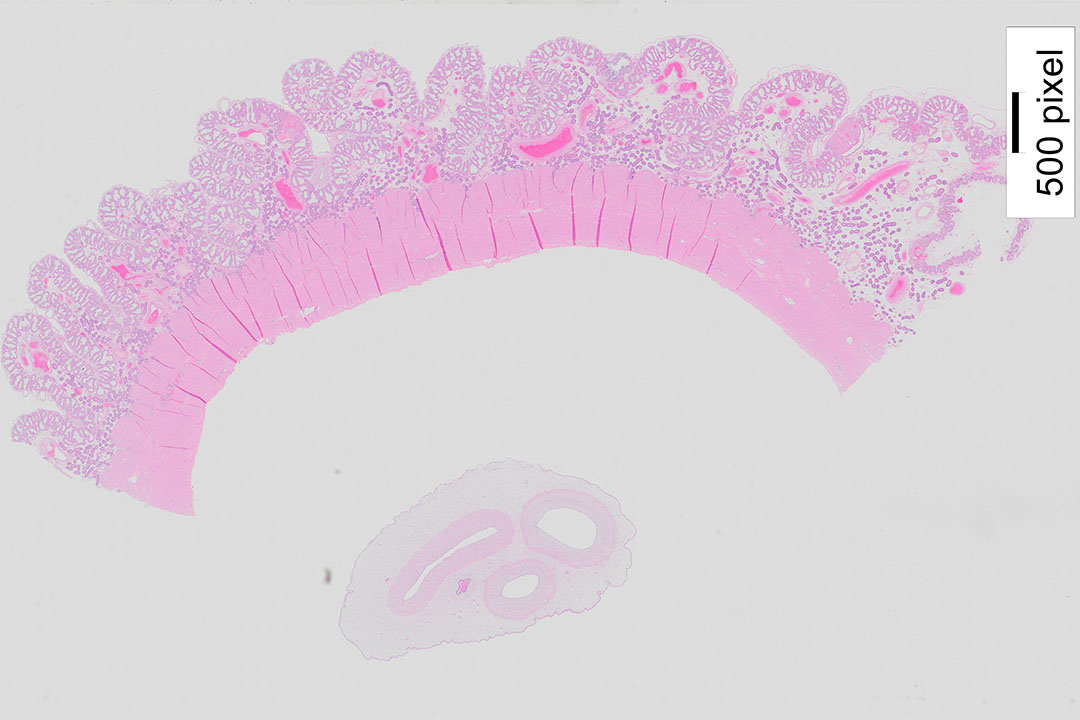
The world’s most expensive pig disease
For pig producers around the world, porcine reproductive and respiratory syndrome virus (PRRSV) is one of the most economically devastating and dreaded diseases.
By Fiona MoserConsidered one of the most significant viruses in swine production, PRRSV costs over $664 million each year in the United States alone.
Although the virus is not prevalent in this region of Canada, a group of researchers at the University of Saskatchewan are hard at work trying to learn more about the virus so they and other scientists can find ways to control it.
PRRSV was first detected in the late 1980s when it caused reproductive failure in the pig populations of the United States and Europe. Scientists later identified two distinct types of PRRSV: type 1 PRRSV found in Europe, and type 2, a more virulent genotype that’s found in North America.
PRRSV is classified as a small RNA virus — a type of virus that has ribonucleic acid (RNA) as its genetic material. RNA viruses cause diseases in both humans and animals, and they generally have high mutation rates.
This specific virus is responsible for two different syndromes in pigs, and both are potentially fatal.
“The virus is capable of causing respiratory disease in young pigs and a reproductive disease in pregnant females. It kills neonatal pigs [or] sometimes those pigs infected at birth survive and then infect other pigs at later stages of production,” explains Dr. John Harding, a professor of swine production medicine at the Western College of Veterinary Medicine (WCVM).
PRRSV is particularly feared because it can mutate very rapidly and can evade the immune system, causing vaccines to be less effective. In addition, PRRSV can spread like wildfire in areas where pig density is high. Because there are no treatment or effective control strategies available to stop regional spread, pigs face certain infection and high risk of mortality.
“Right now control options are very limited, particularly for strains that differ from the commercial vaccines. Long-term control depends on the herd developing immunity, which even with vaccination can take many months. In the meantime, there is little one can do to protect against fetal death and high mortality after birth,” says Harding.
Harding and his team are focusing their research on type 2 reproductive PRRSV; specifically, they’re trying to identify the mechanism of fetal infection and ultimately fetal death. Once the virus is better understood, further research can concentrate on developing methods for controlling this economically important disease.
“When we have answered all or some of these questions, we will be able to come up with novel control strategies to block various mechanisms causing infection or death; or come up with more resilient fetuses,” says Harding.
Because PRRSV doesn’t cause noticeable damage to fetal organs, researchers have struggled to determine the mechanism of fetal death.
They believe that the answer to why reproductive PRRSV causes fetuses to die in utero may be hidden in the folds and invaginations at the maternal-fetal interface. The maternal-fetal interface (MFI) is essentially where the mother’s uterine and fetus’s placental tissues meet, allowing for the exchange of nutrients and wastes.
Right now, the scientists know that there is some degree of abnormal separation between the maternal and fetal tissues of pigs infected with PRRSV. However, they’re still unsure if this detachment is responsible for reproductive failure.
With further investigation, the researchers hope to identify the role that this separation plays in reproductive failure. They also want to determine what should be considered an abnormal degree of detachment.
Harding’s research team is also investigating whether apoptosis is present in the fetal tissues — another possible explanation for the fetal death. Apoptosis is a process of natural cell death in animals. Viruses often use this mechanism of programmed cell death to maximize their spread.
Previous studies of type 1 PRRSV have confirmed that infected animals had an increased amount of apoptosis in fetal placental tissue at the maternal-fetal interface. However, apoptosis in the fetal organ tissues has not yet been measured. The researchers speculate that an increase in the amount of apoptosis in fetal organs such as the heart could contribute to fetal death.
Right now, one of the biggest challenges facing PRRSV researchers is that of being able to identify the mechanism responsible for fetal death. Once they’ve been able to meet this challenge and develop a greater understanding of PRRSV, work can begin on developing strategies for combatting the disease.
“Through a combination of management strategies, vaccinations, genomic resilience and maybe some other tools we don’t know about at this point in time, we can provide new control methods to a producer so that if their farm becomes infected with the virus, they will have tools to mitigate the consequences of the infection,” says Harding. “I also think we will be able to make animals more resilient.”
Fiona Moser of Canmore, Alta., is a College of Agriculture and Bioresources alumnus who was part of the WCVM’s Undergraduate Summer Research and Leadership program in 2017. Fiona’s story is part of a series of stories written by summer research students at the veterinary college.
